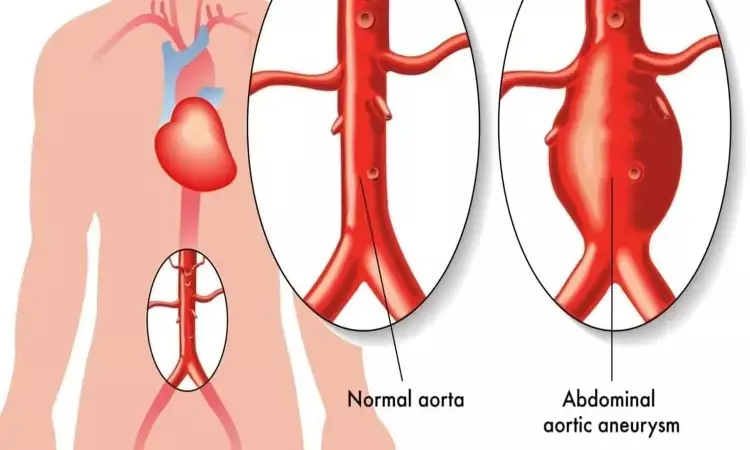- Home
- Medical news & Guidelines
- Anesthesiology
- Cardiology and CTVS
- Critical Care
- Dentistry
- Dermatology
- Diabetes and Endocrinology
- ENT
- Gastroenterology
- Medicine
- Nephrology
- Neurology
- Obstretics-Gynaecology
- Oncology
- Ophthalmology
- Orthopaedics
- Pediatrics-Neonatology
- Psychiatry
- Pulmonology
- Radiology
- Surgery
- Urology
- Laboratory Medicine
- Diet
- Nursing
- Paramedical
- Physiotherapy
- Health news
- Fact Check
- Bone Health Fact Check
- Brain Health Fact Check
- Cancer Related Fact Check
- Child Care Fact Check
- Dental and oral health fact check
- Diabetes and metabolic health fact check
- Diet and Nutrition Fact Check
- Eye and ENT Care Fact Check
- Fitness fact check
- Gut health fact check
- Heart health fact check
- Kidney health fact check
- Medical education fact check
- Men's health fact check
- Respiratory fact check
- Skin and hair care fact check
- Vaccine and Immunization fact check
- Women's health fact check
- AYUSH
- State News
- Andaman and Nicobar Islands
- Andhra Pradesh
- Arunachal Pradesh
- Assam
- Bihar
- Chandigarh
- Chattisgarh
- Dadra and Nagar Haveli
- Daman and Diu
- Delhi
- Goa
- Gujarat
- Haryana
- Himachal Pradesh
- Jammu & Kashmir
- Jharkhand
- Karnataka
- Kerala
- Ladakh
- Lakshadweep
- Madhya Pradesh
- Maharashtra
- Manipur
- Meghalaya
- Mizoram
- Nagaland
- Odisha
- Puducherry
- Punjab
- Rajasthan
- Sikkim
- Tamil Nadu
- Telangana
- Tripura
- Uttar Pradesh
- Uttrakhand
- West Bengal
- Medical Education
- Industry
Overall mortality with endovascular Abdominal Aortic Aneurysm Repair higher compared to Open surgery

Overall mortality after elective abdominal aortic aneurysm repair was higher with endovascular repair than open repair despite reduced 30-day mortality and perioperative morbidity after endovascular repair, as suggested by the latest study published in JAMA Network Open.
Additionally, the study found that endovascular repair was associated with significantly higher long-term rupture and reintervention rates.
The use of endovascular repair of abdominal aortic aneurysms (EVAR) has dramatically increased since its first inception in 1991, accounting for an estimated 74% to 76% of intact abdominal aortic aneurysms (AAA) repairs.
The Dutch Randomized Endovascular Aneurysm Management (DREAM), EVAR-1, and Open Versus Endovascular Repair (OVER) multicenter randomized clinical trials all demonstrated decreased perioperative mortality and morbidity with the endovascular approach compared with open aneurysm repair (OAR), which was further confirmed in retrospective studies.
The study conducted by researchers at UCSD tried to compare long-term outcomes of endovascular vs open repair of abdominal aortic aneurysm.
This multicenter retrospective cohort study used de-identified data with a 6-year follow-up from the Medicare-matched Vascular Quality Initiative Vascular Implant Surveillance and Interventional Outcomes Network database.
Patients undergoing first-time elective endovascular or open abdominal aortic aneurysm repair from 2003 to 2018 were propensity score-matched.
Patients with ruptured abdominal aortic aneurysm, concomitant procedures, or prior history of abdominal aortic aneurysm repair, were excluded.
Data were analyzed from January 1, 2003, to December 31, 2018.
The primary long-term outcome of interest was 6-year all-cause mortality, rupture, and reintervention.
Secondary outcomes included 30-day mortality and perioperative complications.
Among a total of 32 760 patients who underwent surgical abdominal aortic aneurysm repair, 28 281 patients underwent endovascular repair and 4479 patients underwent open repair.
The researchers found that open repair was associated with significantly lower 6-year mortality compared with endovascular repair with increases in mortality starting from 1 to 2 years and 2 to 6 years.
1. Open repair, compared with endovascular repair, also was associated with significantly lower rates of 6-year rupture and reintervention.
2. Open repair was associated with significantly higher odds of 30-day mortality and complications.
"These findings emphasize the importance of careful patient selection and long-term follow-up surveillance for patients who undergo endovascular repair," noted the researchers.
For the full article: https://jamanetwork.com/journals/jamanetworkopen/fullarticle/2792290
B.Sc Life Sciences, M.Sc Biotechnology, B.Ed
Isra Zaman is a Life Science graduate from Daulat Ram College, Delhi University, and a postgraduate in Biotechnology from Amity University. She has a flair for writing, and her roles at Medicaldialogues include that of a Sr. content writer and a medical correspondent. Her news pieces cover recent discoveries and updates from the health and medicine sector. She can be reached at editorial@medicaldialogues.in.
Dr Kamal Kant Kohli-MBBS, DTCD- a chest specialist with more than 30 years of practice and a flair for writing clinical articles, Dr Kamal Kant Kohli joined Medical Dialogues as a Chief Editor of Medical News. Besides writing articles, as an editor, he proofreads and verifies all the medical content published on Medical Dialogues including those coming from journals, studies,medical conferences,guidelines etc. Email: drkohli@medicaldialogues.in. Contact no. 011-43720751


